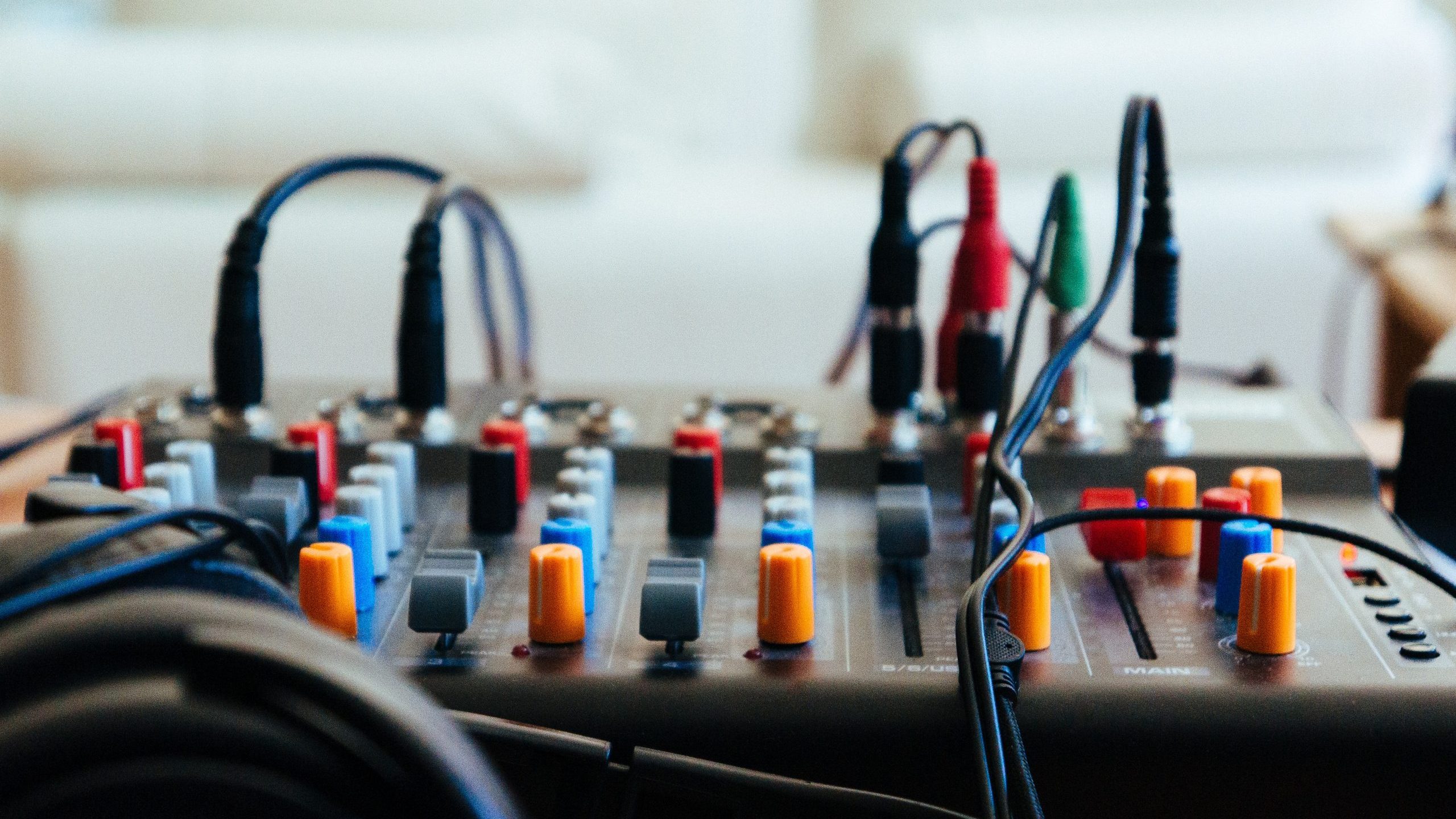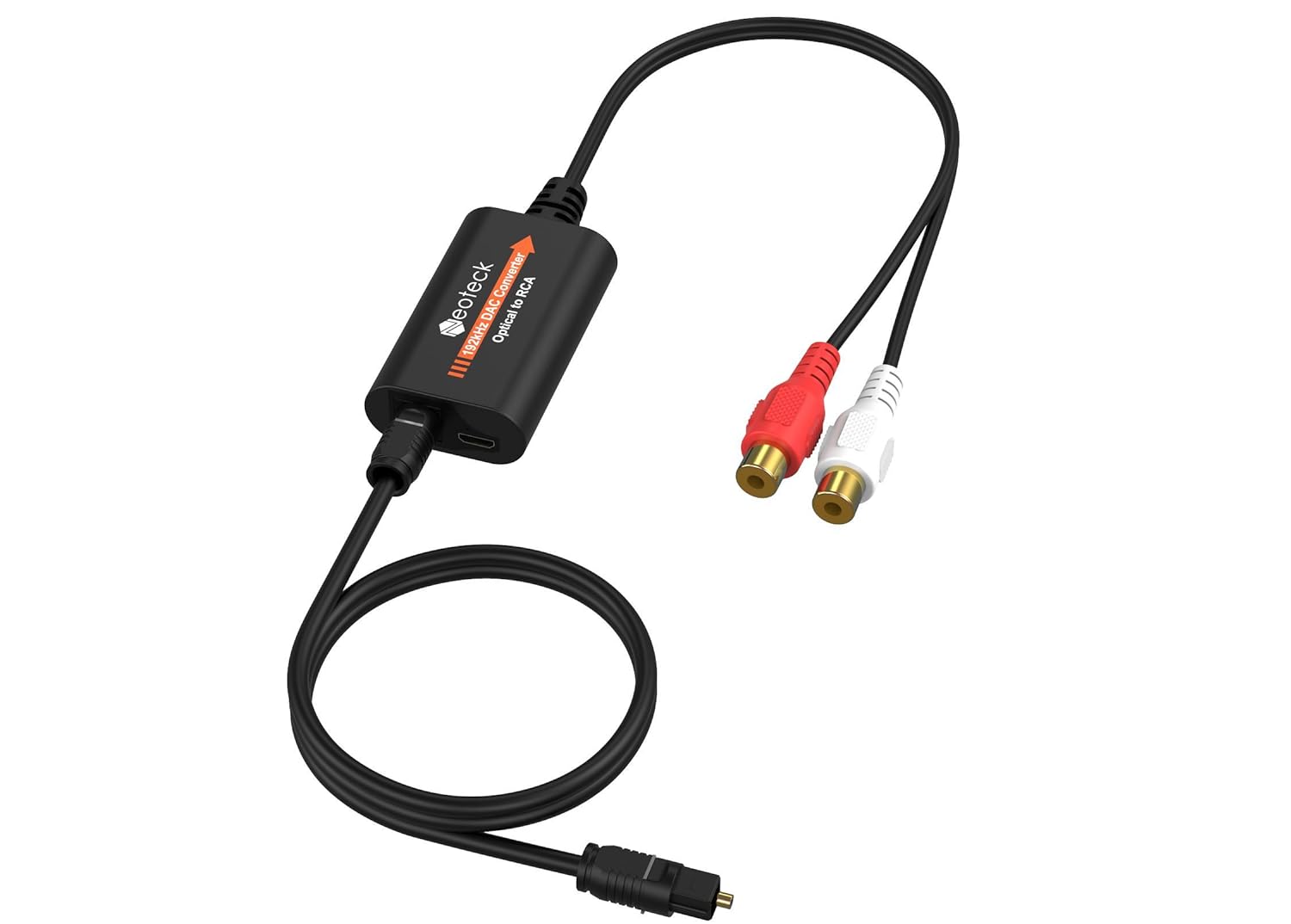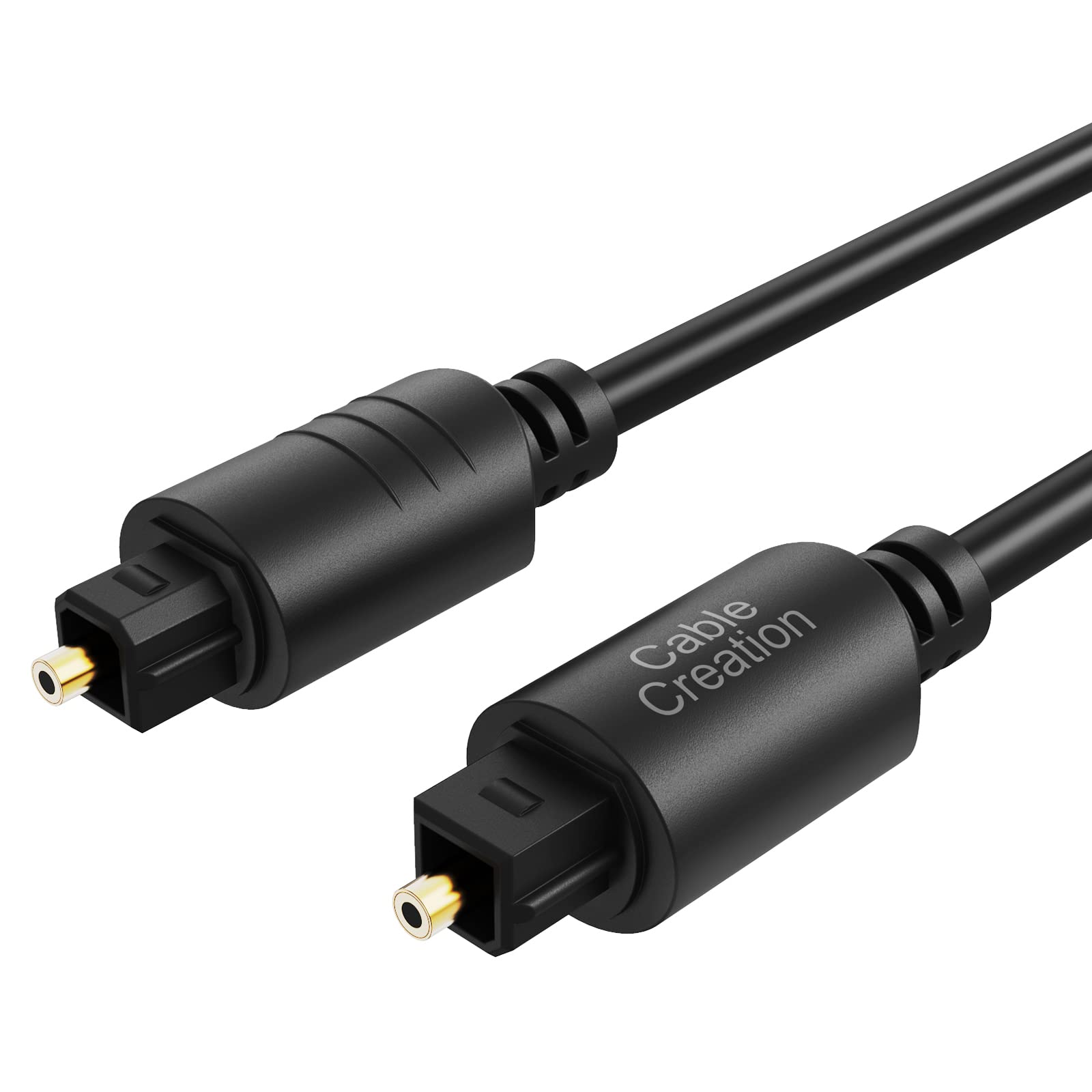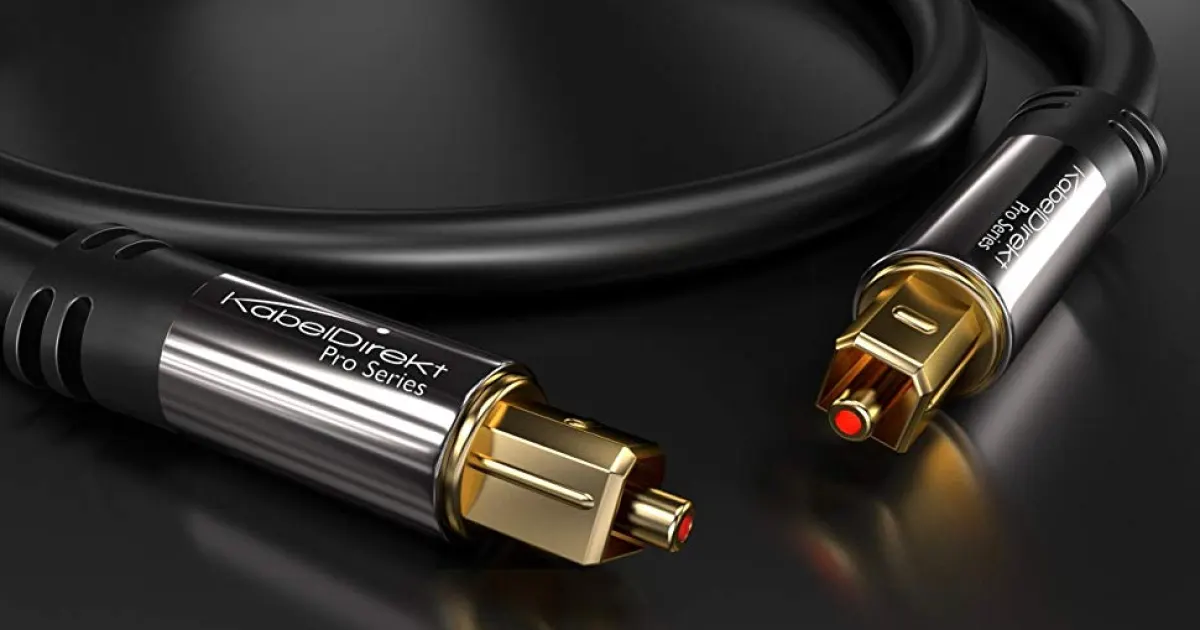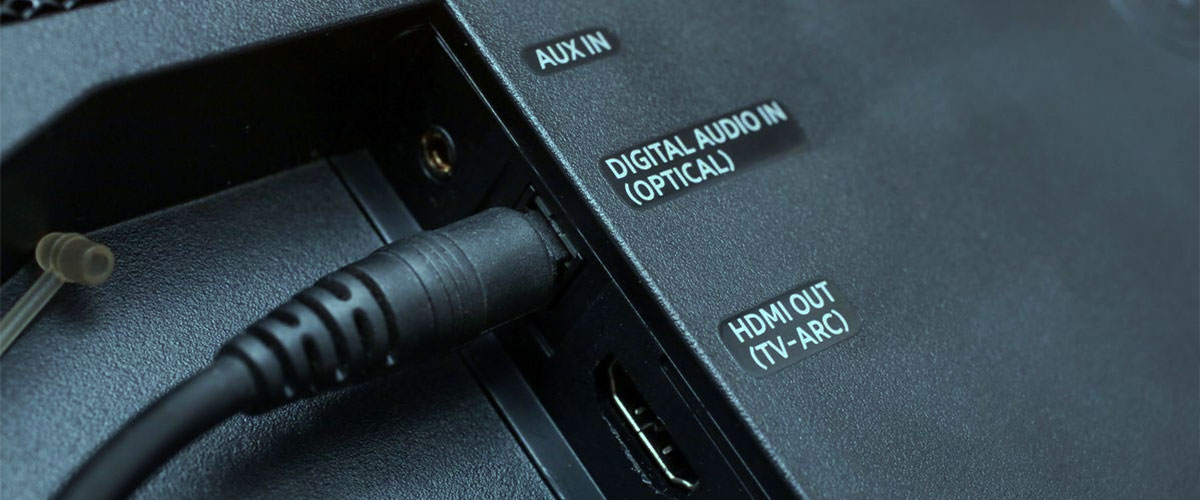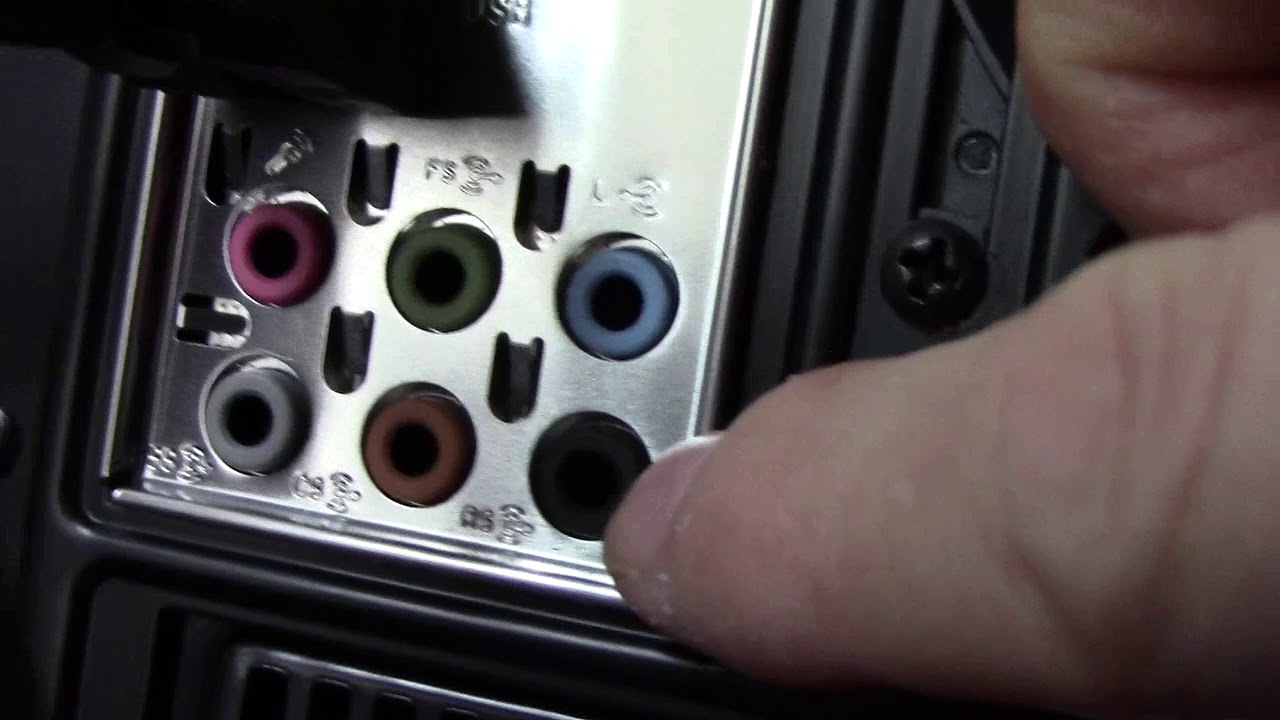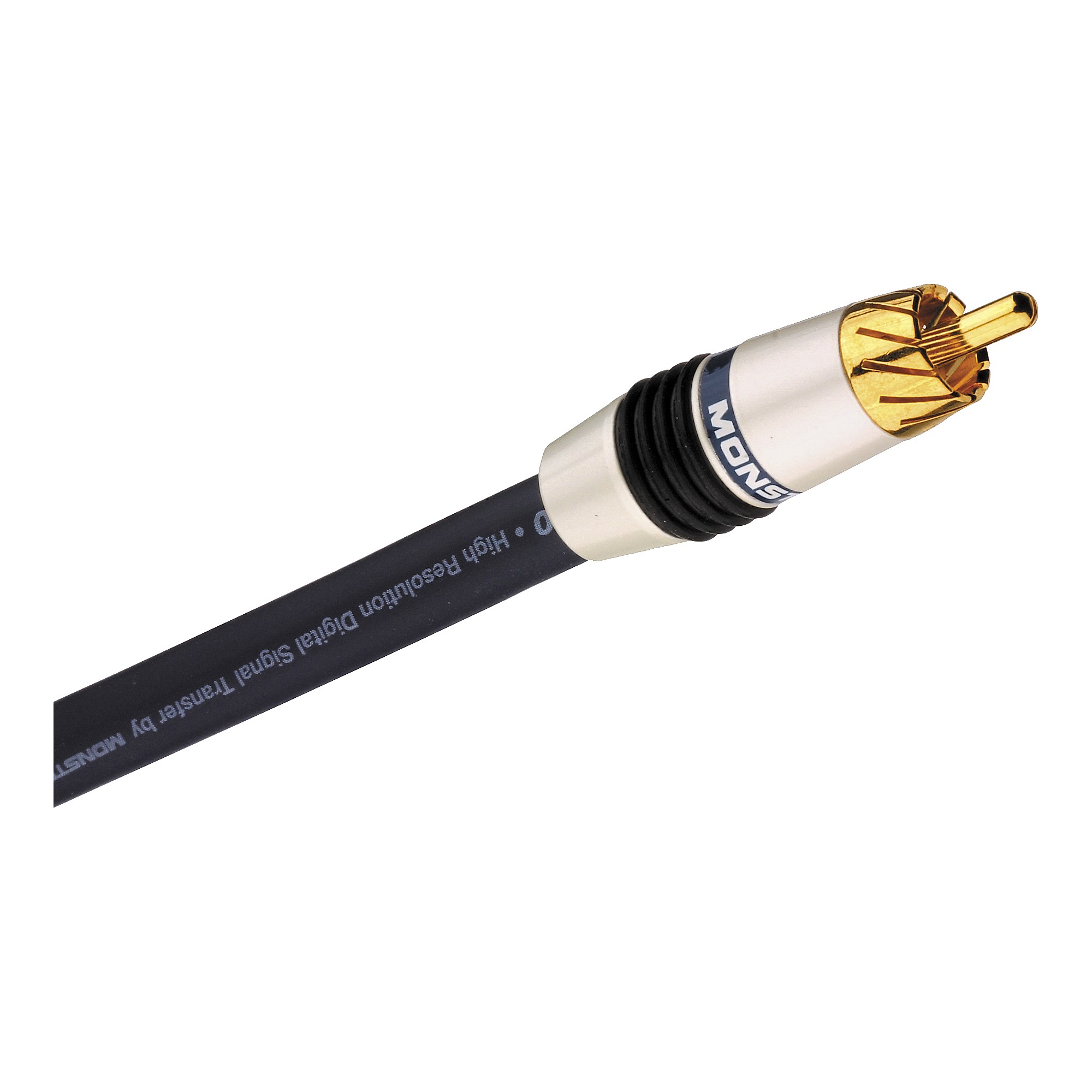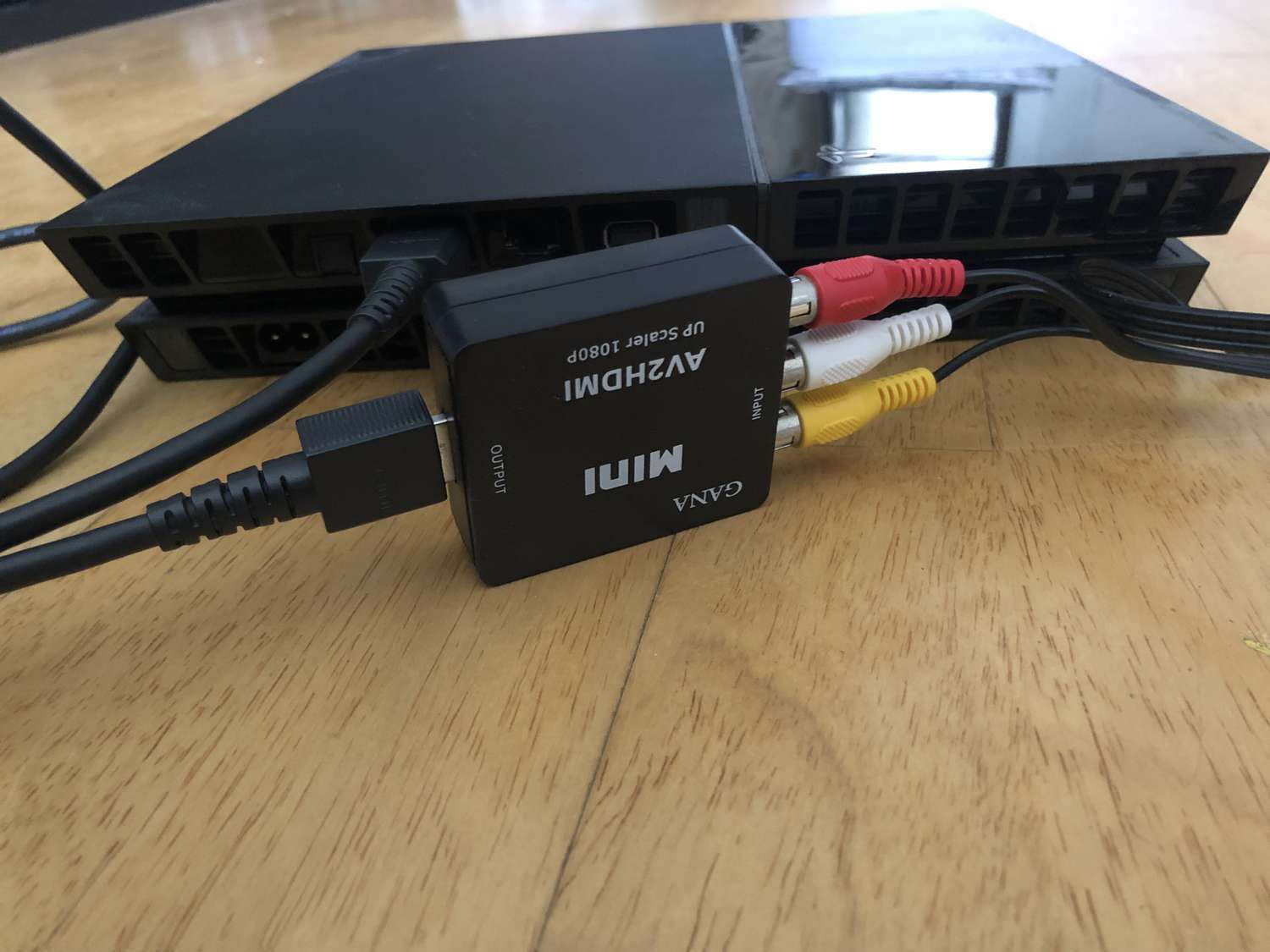Home>Production & Technology>Audio Cable>How Long Can An Optical Audio Cable Be
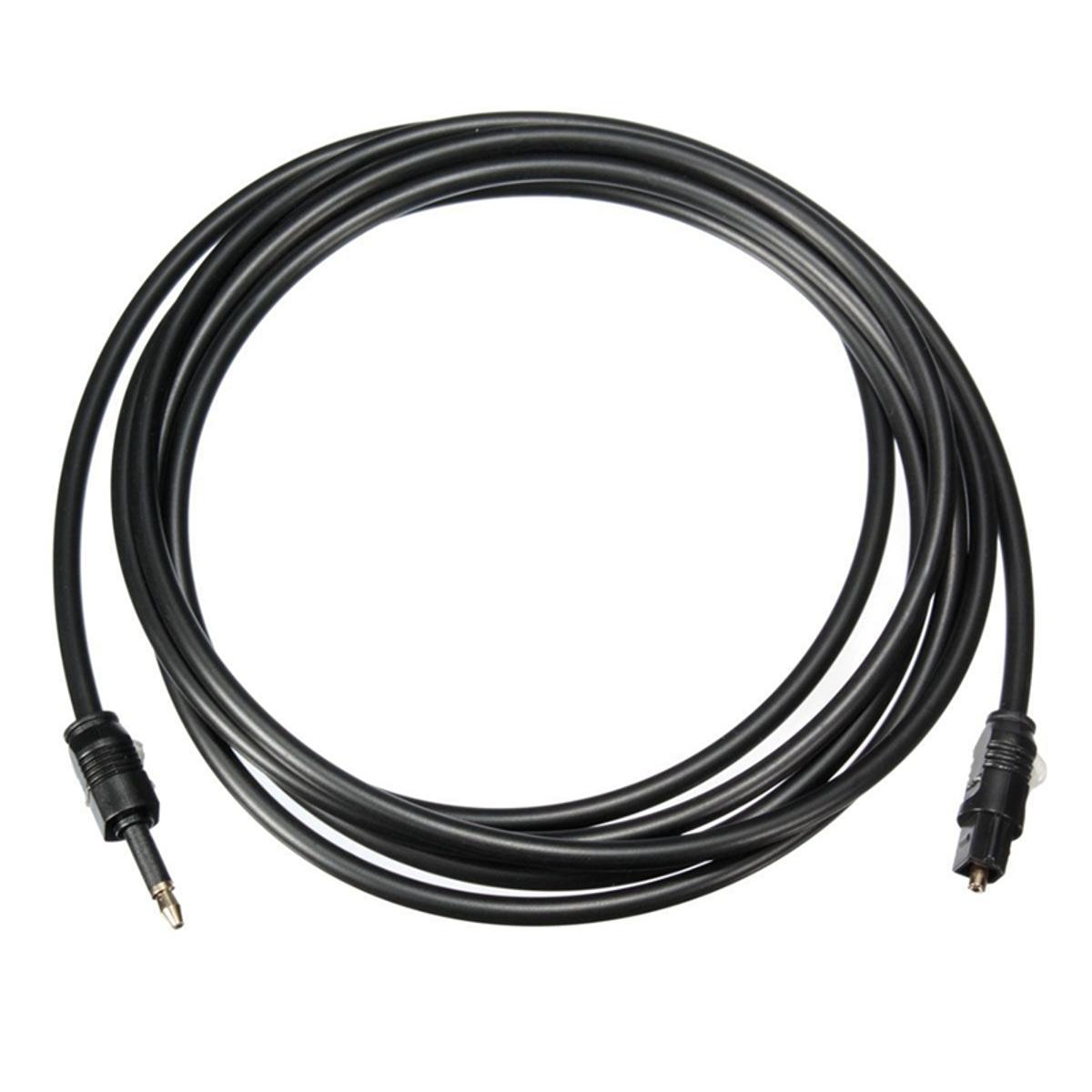

Audio Cable
How Long Can An Optical Audio Cable Be
Modified: January 22, 2024
Discover the optimal length for an audio cable and how it affects audio quality. Find out how long an optical audio cable can be and its impact on sound transmission.
(Many of the links in this article redirect to a specific reviewed product. Your purchase of these products through affiliate links helps to generate commission for AudioLover.com, at no extra cost. Learn more)
Table of Contents
- Introduction
- What is an Optical Audio Cable?
- Factors That Affect the Length of an Optical Audio Cable
- The Role of Fiber Optic Technology in Signal Transmission
- Understanding Signal Loss in Optical Audio Cables
- Recommended Maximum Length for Optical Audio Cables
- Potential Solutions for Extending Optical Audio Cable Length
- Conclusion
Introduction
Welcome to the world of audio cables! If you’re an audio enthusiast or simply someone who wants to optimize their audio setup, you might have come across the term “optical audio cable.” This article aims to provide you with a comprehensive understanding of optical audio cables, their purpose, and the factors that affect their length.
An optical audio cable, also known as a Toslink or S/PDIF cable, is primarily used for transmitting digital audio signals between audio devices. Unlike traditional analog cables, which transmit audio signals as electrical currents, optical audio cables use fiber optic technology to transmit audio signals as pulses of light.
The advantage of using optical audio cables lies in their ability to minimize interference and deliver high-quality digital audio signals. These cables are commonly used in home theater systems, soundbars, gaming consoles, and other audio devices that utilize digital audio connections.
However, one common question that arises when it comes to optical audio cables is the maximum length they can be. In this article, we will explore the factors that influence the length of an optical audio cable, the role of fiber optic technology in signal transmission, and potential solutions for extending the cable length.
So, whether you’re planning to set up a home theater system or looking to improve the audio quality of your gaming setup, understanding the limitations and possibilities of optical audio cables is essential. Let’s dive into the fascinating world of audio cables and discover the magic behind this modern technology!
What is an Optical Audio Cable?
An optical audio cable, also known as a Toslink or S/PDIF cable, is a type of cable that is designed to transmit digital audio signals between various audio devices. It utilizes fiber optic technology, where the audio signal is converted into pulses of light and transmitted through a transparent optical fiber.
Unlike traditional analog cables, which transmit audio signals as electrical currents, optical audio cables offer several advantages. Firstly, they provide a higher level of signal clarity and fidelity, resulting in superior sound quality. This is due to the fact that the digital audio signal is immune to electromagnetic interference, which can degrade the signal quality in analog cables.
Secondly, optical audio cables have a longer transmission distance compared to analog cables. This is because the optical fiber used in these cables can transmit the light signals over long distances without significant signal loss or degradation. This makes optical audio cables ideal for connecting audio devices that are far apart from each other.
Optical audio cables are commonly used in home theaters, soundbars, gaming consoles, and other audio equipment that require digital audio connections. They are typically equipped with a square-shaped plug with a centered pin, known as a Toslink connector. This connector is designed to ensure a secure and stable connection between devices.
It’s also worth noting that optical audio cables support various audio formats, including Dolby Digital, DTS, and PCM. This makes them versatile and compatible with a wide range of audio devices and systems.
In summary, an optical audio cable is a modern and efficient solution for transmitting digital audio signals between devices. Its use of fiber optic technology ensures high-quality audio transmission, minimal signal loss, and compatibility with different audio formats. So, whether you’re an audio enthusiast or simply looking to enhance your audio setup, an optical audio cable can be a valuable addition to your collection of audio cables.
Factors That Affect the Length of an Optical Audio Cable
The length of an optical audio cable can be influenced by several factors. Understanding these factors is crucial to ensure optimal performance and avoid signal loss or degradation. Let’s take a closer look at the key factors that affect the length of an optical audio cable:
- Fiber Optic Cable Quality: The quality of the fiber optic cable itself plays a significant role in determining the maximum length. High-quality cables with better construction and materials tend to have less signal loss and can support longer distances. Investing in a well-made optical audio cable is essential for maintaining signal integrity.
- Signal Strength: The strength of the initial audio signal can affect how far it can be transmitted. A stronger starting signal has a better chance of maintaining its integrity over longer distances. It’s worth noting that different audio devices may have varying output signal strengths, so it’s essential to check the specifications of your devices and choose an appropriate cable length accordingly.
- Connectors and Interfaces: The quality and compatibility of the connectors and interfaces can impact the length of an optical audio cable. Poorly designed or damaged connectors may result in signal loss, noise, or a poor connection, reducing the effective length of the cable. Ensure that your cables have sturdy, well-fitting connectors that are compatible with your audio devices.
- Bending Radius: Fiber optic cables have a minimum bend radius, which is the minimum radius at which the cable can be bent without affecting signal quality. Exceeding the bending radius can cause signal attenuation or loss. Avoid sharp corners or excessive bending to maintain optimal signal transmission.
- Environmental Interference: External factors such as electromagnetic interference (EMI) or radio frequency interference (RFI) can impact the length of an optical audio cable. If the cable runs near power cables, electronic devices, or sources of interference, it may lead to signal degradation. It is advisable to keep the optical cable away from potential sources of interference to ensure optimal performance.
Keep in mind that these factors are interrelated, and a combination of these elements determines the maximum length of an optical audio cable. While optical audio cables can transmit signals over long distances, it is crucial to consider these factors and choose a cable length that is suitable for your specific audio setup.
The Role of Fiber Optic Technology in Signal Transmission
Fiber optic technology plays a crucial role in the transmission of signals through optical audio cables. It is a method of transmitting information using light pulses that travel through a transparent optical fiber. This technology offers several advantages over traditional copper-based cables for audio signal transmission.
One of the primary advantages of fiber optic technology is its ability to transmit signals over long distances without significant signal loss or degradation. This is because optical fibers are made of highly transparent materials, such as glass or plastic, which allow light signals to propagate with minimal attenuation. Unlike copper cables, which suffer from electrical resistance and signal degradation over distance, optical fibers retain the signal quality even after traveling long distances.
Another important aspect of fiber optic technology is its resistance to electromagnetic interference (EMI) and radio frequency interference (RFI). Since optical audio cables transmit signals as pulses of light rather than electrical currents, they are immune to these types of interference. This ensures a clean, interference-free signal transmission, resulting in superior audio quality.
In addition to its resistance to interference, fiber optic technology provides a higher bandwidth capacity. Optical fibers can carry a large amount of data and support various audio formats, including high-definition audio and surround sound. This allows for a more immersive and engaging audio experience.
Fiber optic technology also offers secure data transmission. Unlike copper cables, which can be vulnerable to eavesdropping or signal tapping, signals transmitted through optical fibers are difficult to intercept. This makes optical audio cables a preferred choice for situations where data security is a concern.
It’s important to note that fiber optic technology is not only limited to audio signal transmission. It is widely used in telecommunications, networking, and data transmission applications due to its reliability and high-performance capabilities.
In summary, fiber optic technology is the backbone of optical audio cables. Its ability to transmit signals over long distances with minimal loss, resistance to interference, high bandwidth capacity, and secure data transmission make it the preferred choice for digital audio signal transmission. By utilizing fiber optic technology, optical audio cables provide a reliable and efficient solution for transporting high-quality audio signals between audio devices.
Understanding Signal Loss in Optical Audio Cables
While optical audio cables offer numerous advantages, it’s important to understand that they are not entirely immune to signal loss. Signal loss refers to the reduction in the strength or quality of the digital audio signal during transmission through the optical cable. Several factors can contribute to signal loss in optical audio cables:
- Attenuation: Attenuation is the gradual loss of signal strength as it travels through the optical fiber. Although optical fibers have low attenuation compared to traditional copper cables, some signal loss can still occur over long distances. This loss is due to the scattering and absorption of light within the fiber.
- Misalignment: Misalignment between the transmitting and receiving ends of the optical cable can result in signal loss. If the cable does not connect securely or if the connectors are misaligned, the light signals may not be accurately received, leading to signal degradation or loss.
- Connector Issues: Poorly manufactured or damaged connectors can cause signal loss in optical audio cables. If the connectors do not fit properly or if there are issues with the connectors’ optical surfaces, it can lead to signal interruptions or reduced signal quality.
- Bending and Cable Stress: Excessive bending or cable stress can cause signal loss in optical audio cables. Fiber optic cables have a minimum bend radius, and exceeding this limit can result in signal attenuation or even cable breakage. It’s important to handle and route the cables carefully to avoid any excessive stress that could impact signal transmission.
- Environmental Interference: While optical audio cables are less susceptible to electromagnetic interference (EMI) and radio frequency interference (RFI) compared to copper cables, external factors such as nearby power cables, electronic devices, or sources of interference can still affect signal transmission. It’s best to ensure that the cables are routed away from potential sources of interference.
It’s important to choose high-quality optical audio cables and ensure proper cable management to minimize signal loss. Regularly inspecting and cleaning the connectors can also help maintain optimal signal transmission. Additionally, keeping cable runs within the recommended maximum length can help mitigate signal loss and maintain the best possible audio quality.
By understanding the factors that contribute to signal loss in optical audio cables, you can take the necessary precautions to optimize your audio setup and ensure the best possible audio experience.
Recommended Maximum Length for Optical Audio Cables
The maximum length of an optical audio cable depends on various factors, including the quality of the cable, the strength of the audio signal, and the transmission technology used. While there is no hard and fast rule, it is generally recommended to keep optical audio cables within a certain limit to ensure optimal signal transmission and minimize signal loss.
For most consumer-grade optical audio cables, the recommended maximum length is typically around 10 to 15 meters (30 to 50 feet). Beyond this length, there is an increased risk of signal loss and degradation. However, it’s important to note that this is a general guideline, and the actual maximum length can vary depending on the specific cable and equipment being used.
It’s worth mentioning that professional-grade optical audio cables, such as those used in professional audio studios or large-scale audio installations, may support longer distances. These cables are usually made with high-quality materials and have better signal integrity, allowing for longer transmission lengths. However, they are also more expensive and may not be necessary for regular consumer setups.
When considering the length of an optical audio cable for your setup, it is crucial to assess your specific requirements and take into account factors such as the distance between audio devices, potential sources of interference, and the quality of the cable itself. Additionally, it’s always a good idea to consult the manufacturer’s guidelines or specifications for the audio equipment you are using to ensure that you do not exceed any recommended cable length limitations.
If you find that your setup requires a longer optical audio cable than what is recommended, there are potential solutions available. Signal boosters or optical repeaters can be used to extend the reach of the cable, amplifying the signal and maintaining its quality over longer distances. However, it is important to note that these solutions may introduce additional complexity and cost to your audio setup.
Overall, while optical audio cables offer impressive signal transmission capabilities, it is advisable to adhere to the recommended maximum length guidelines to ensure optimal performance and maintain the highest possible audio quality.
Potential Solutions for Extending Optical Audio Cable Length
If you find yourself needing to extend the length of an optical audio cable beyond the recommended maximum, there are a few potential solutions available to help you achieve this without compromising signal quality. Here are some options to consider:
- Signal Boosters: Signal boosters, also known as optical repeaters, can be used to amplify the optical signal and extend the reach of the cable. These devices regenerate the signal, compensating for any signal loss experienced over longer cable lengths. Signal boosters are typically placed at strategic points along the optical cable to maintain signal integrity throughout the extended length.
- Fiber Optic Extender: A fiber optic extender is a device that transmits optical signals over a longer distance by converting the signal to a different format, such as Ethernet or HDMI, and then converting it back to an optical signal at the other end. This allows for longer cable runs by utilizing other transmission technologies that may have longer distance capabilities.
- Daisy-Chaining: If your audio setup allows for it, you can consider daisy-chaining multiple shorter optical audio cables together. By connecting them end-to-end, you can effectively extend the overall length of the cable. However, it’s important to note that each connector and connection point introduces a small amount of signal loss, so it’s best to use high-quality cables and connectors to minimize this loss.
- Alternative Connection Methods: In some cases, you may have the option to use alternative connection methods that can support longer distances. For example, if your audio devices have HDMI ports, you can consider using HDMI cables instead of optical audio cables, as HDMI cables generally support longer transmission distances. However, this option may require additional equipment or adapters to convert the audio signal to the desired format.
When choosing a solution for extending the length of an optical audio cable, it’s important to consider factors such as the specific requirements of your audio setup, the available equipment and connectors, and your budget. It’s also advisable to consult with audio professionals or check with manufacturers for compatibility and compatibility of the chosen solution with your audio devices.
Ultimately, while it is possible to extend the length of an optical audio cable, it’s important to keep in mind that every extension or added component introduces the potential for signal degradation. Therefore, it’s best to maintain the integrity of the audio signal by utilizing high-quality components and minimizing the overall length of the cable whenever possible.
Conclusion
Optical audio cables, with their use of fiber optic technology, provide a reliable and efficient solution for transmitting digital audio signals between audio devices. They offer superior sound quality, resistance to interference, and the ability to transmit signals over long distances without significant signal loss. However, understanding the limitations and considerations surrounding optical audio cable length is essential for achieving optimal performance.
In this article, we have explored the factors that affect the length of an optical audio cable, including the quality of the cable, signal strength, connectors, bending radius, and potential interference. By considering these factors and adhering to recommended maximum cable lengths, you can ensure optimal signal transmission and maintain high-quality audio reproduction.
In situations where extending the cable length becomes necessary, solutions such as signal boosters, fiber optic extenders, or daisy-chaining cables can be considered. However, it’s important to be mindful of potential signal loss or degradation introduced by these solutions, and to use high-quality components to minimize such issues.
Ultimately, when it comes to setting up your audio equipment, it is crucial to find the right balance between cable length and optimal audio performance. By understanding the capabilities and limitations of optical audio cables and considering the specific requirements of your audio setup, you can create an immersive and high-fidelity audio experience.
Whether you’re setting up a home theater system, upgrading your gaming audio, or simply connecting audio devices in your living room, optical audio cables are a versatile and reliable option. Their ability to transmit digital audio signals with exceptional clarity and minimal interference makes them an ideal choice for high-quality audio reproduction.
So, embrace the world of optical audio cables and unlock the full potential of your audio devices. Enjoy the crystal-clear sound and immerse yourself in a truly captivating audio experience!

